https://urbannext.net/designing-oneself-with-artificial-senses/
| Designing Oneself with Artificial Senses https://urbannext.net/designing-oneself-with-artificial-senses/ |

Categories: Areti Markopoulou, Audio&visual, Essay, expanding design practices, IaaC, Luis Fraguada, Neil Harbisson, No Density, Pablo Ros, Senseable Technologies, Talk, Technology and fabrication, Transpecies Society
A conversation about tattoos, artificial senses, and transpecies self-designing to save the world.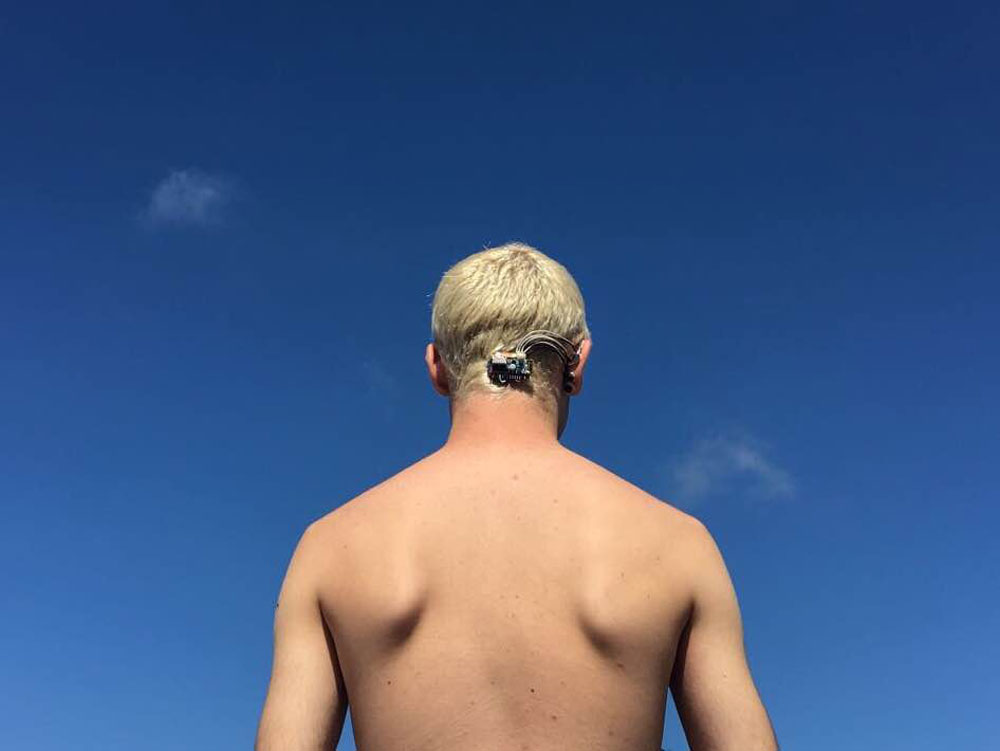
Pablo Ros: I’d like to talk about the significance of tattoos. Tattooing is a primitive process of reconstructing the body. It represents changes in identities, thoughts. It even helps give man the power to survive failings in hostile environments. In some Southeast Asian tribes, men would get animal tattoos in order to gain the abilities of those animals. A fisherman would have a fish tattoo so he could swim like a fish and be protected like the most powerful fish that could be turned into a tattoo. In that context, drawing a similarity with the technology that you’re incorporating into your bodies, I’d like to ask you how you would define the incorporation of these techno-tattoos into your bodies. Do they give you unknown abilities? Is there a mystical component? Does this transform you into a being that you weren’t before?
Neil Harbisson: We’ve called it a brain tattoo. It is a way of tattooing your mind or tattooing your perception, modifying it. Tattooing is self-design but in a more visual way. We self-design, but it’s in our brains. What connects us with people who get tattoos is that they are also experiencing the freedom of self-design. Our target isn’t our bodies, but our minds. We aren’t body hackers; we’re neuro hackers or mind hackers. Our goal is to transform our minds or our perception, not our bodies. In order to transform our minds and brains, we transform our bodies. It is a means of changing how our minds work.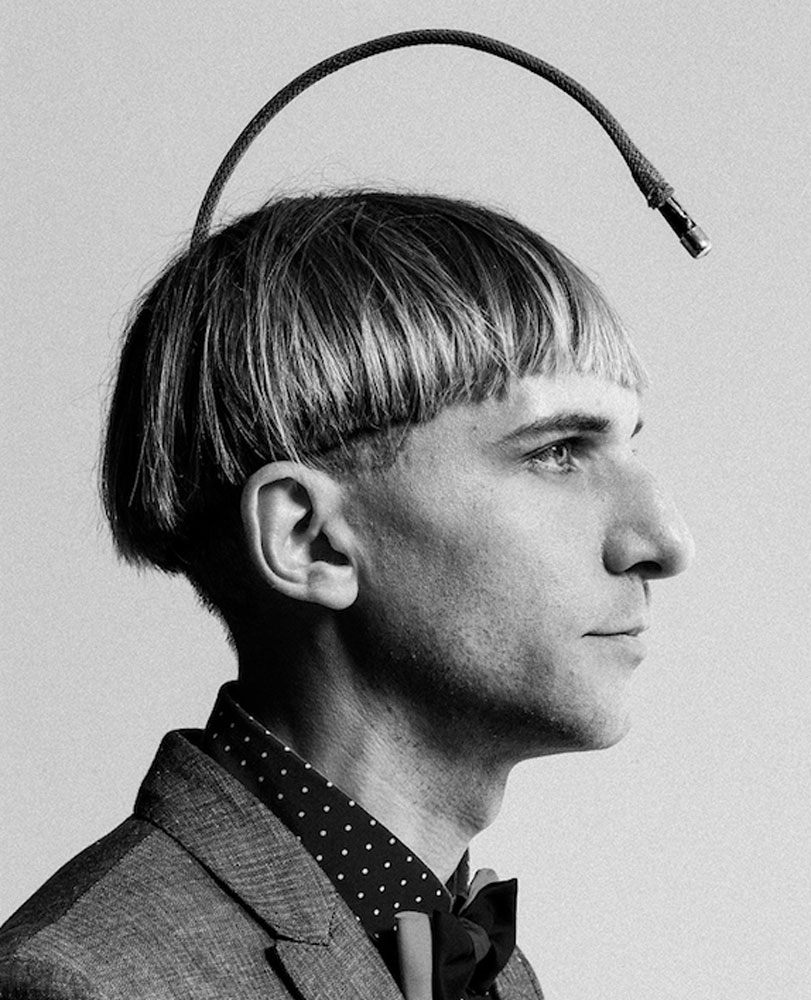 Moon Ribas: I liked your story about how certain tribes used to have fish tattoos to give themselves the attributes of a fish. Actually, we also draw inspiration from other species in nature. It doesn’t all have to be science fiction, imaginary things. Just looking at nature and how other species exist and perceive reality can give us a wealth of inspiration. If we perceived the world like a bee does, our reality would be very different. We rely heavily on our senses, and not so much on skills or aptitudes. It is through our senses that we understand the world in a specific way. If you add a new sense to your perception of reality, it will change how you understanding the world. That can connect us with other species and with the planet.
Moon Ribas: I liked your story about how certain tribes used to have fish tattoos to give themselves the attributes of a fish. Actually, we also draw inspiration from other species in nature. It doesn’t all have to be science fiction, imaginary things. Just looking at nature and how other species exist and perceive reality can give us a wealth of inspiration. If we perceived the world like a bee does, our reality would be very different. We rely heavily on our senses, and not so much on skills or aptitudes. It is through our senses that we understand the world in a specific way. If you add a new sense to your perception of reality, it will change how you understanding the world. That can connect us with other species and with the planet.
Manel Muñoz: With the barometer implanted in my ear, I feel more connected to the atmosphere. It's like we’re joining as a species with natural elements that don’t have a body as we know it.
Areti Markopoulou: A materiality as an animal.
Pablo Ros: There’ a moment I’m curious about, and that’s the moment when you implant the sensors. It seems that, at least in your case, Neil, when you underwent the implant operation the blood was released inside you and at the same time the external technology was internalized as it merged with your biological being. How did you internalize the zero moment of creation? What was the first second of being a cyborg like? How do you preserve and narrate the experience of new flesh?
Neil Harbisson: Again, I think you’re placing more importance on the body than on the mind. The moment I got the implant wasn’t when I started feeling like a cyborg. The implant was just a detail for me. The important thing is the union between the stimulus I receive and my brain, not the body and the organ. There’s the organ and then there’s the sense. The implantation was more a question of practicality. I felt like a cyborg long before that. A lot of people associate becoming a cyborg with getting an implant. Whether someone does or doesn’t feel like a cyborg has nothing to do with their body. A lot of people have technology implanted in their bodies for medical reasons, and they don’t identify as cyborgs. On the other hand, most of the people who write to us are adolescents who don’t have implants, but they feel like cyborgs. So they want implants in the future. The implant comes after years of feeling like a cyborg already. In the same way that, if you’re born in the body of a man but you feel like a woman, you’re a woman. Maybe you’ll want an operation eventually. In my case, the implant was for practicality. The reason all three of us did it is that it’s much more practical to have the implant in your body permanently. A portable device is designed for you to be able to put it on and take it off. From the beginning, that wasn’t our goal. We wanted them to be as permanent as any of our other senses.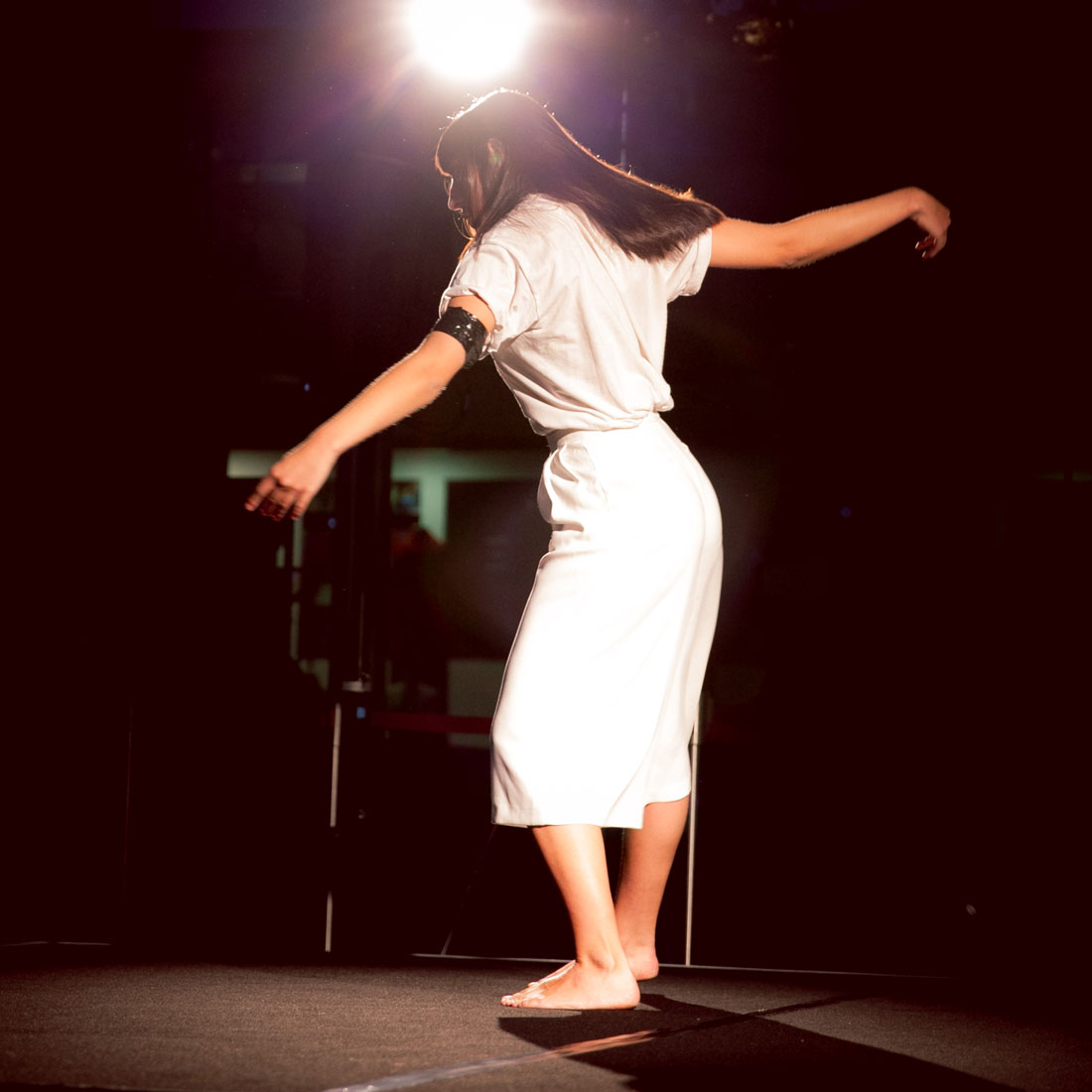 Areti Markopoulou: What does it mean to feel like a cyborg without any implants?
Areti Markopoulou: What does it mean to feel like a cyborg without any implants?
Moon Ribas: For example, we have a friend who says that we are all cyborgs, because there are satellites constantly in orbit around the Earth that act as our third eye. We all have a third eye in space. There are people who are psychologically connected to technology, so a physical union isn’t necessary.
Neil Harbisson: We used to say: “My phone battery is dying.” Now people, especially young people, unconsciously refer to technology in the first person. Now we say: “My battery is dying.” There’s a psychological union with cybernetics or technology that is already part of our identities. A lot of people reflect on that and they identify as cyborgs. The term transpecies makes that identification much broader. It doesn’t have to be a strictly technological identification. Maybe you identify with a sense or with a species or with the atmosphere, and you want to have that physical connection as well. Then we create organs to connect ourselves with elements that aren’t naturally present in our species.
Pablo Ros: Have you considered that this new relationship could be similar to a transgender relationship? Technology makes it possible for me to migrate as a species, diluting the human condition. But it also means I can migrate from male to female.
Neil Harbisson: Someone who’s transgender is still human. The transgender experience, identifying with another gender, doesn’t touch on the question of the species. There is a parallelism, though, because there are similar struggles: like surgery, for example. Transgender surgeries were rejected by bioethics committees for decades. Now we find ourselves in the same situation: bioethics committees don’t accept transpecies surgeries. Lots of transgender people feel a hundred percent human. There may be people, however, who feel a hundred percent woman, but not a hundred percent human.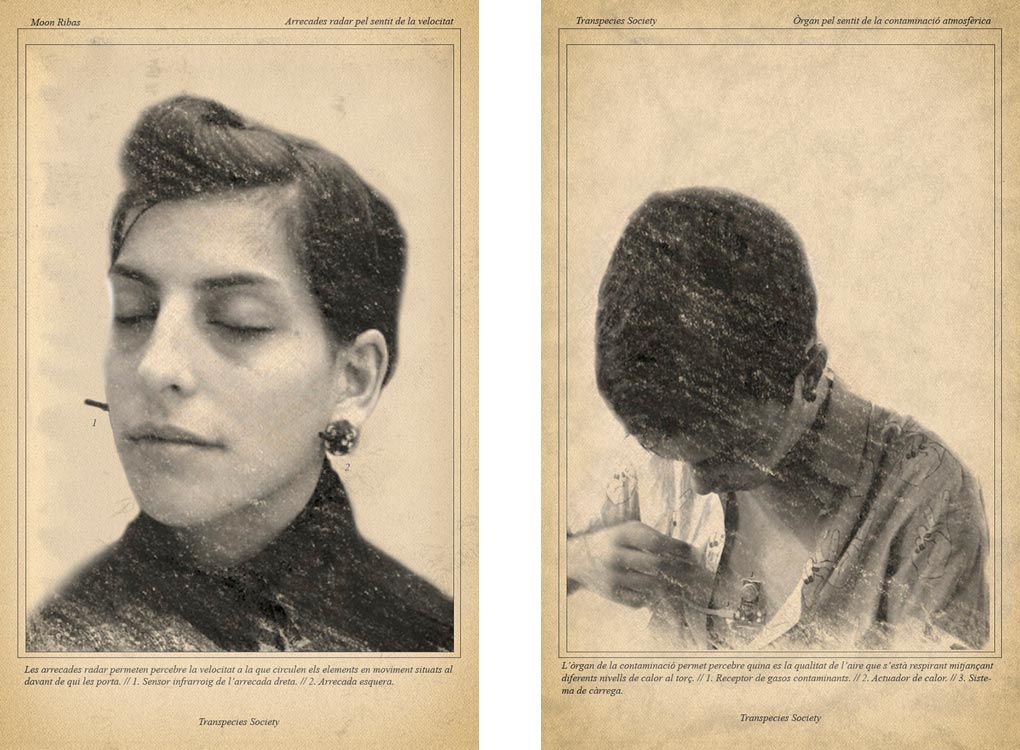 Luis Fraguada: Are teenagers contacting you because this technology has existed since they were born? Or is it because they’re at a time in their lives when they’re thinking about all these things? Why do you think most people contact you?
Luis Fraguada: Are teenagers contacting you because this technology has existed since they were born? Or is it because they’re at a time in their lives when they’re thinking about all these things? Why do you think most people contact you?
Neil Harbisson: Well, Manel was born in 1996. He doesn’t remember a life without technology. It’s hard to find people born after 2001 who don’t identify with technology. There is really a strong part of them that is technological. There are people who want to have technology in their bodies, or they identify with other species and want to have those organs and senses that aren’t naturally present in their own species.
Moon Ribas: There are a lot stereotypes from science fiction movies. It seems like technology in humans has to have a destructive purpose. The younger generations don’t have those stereotypes because technology is part of their daily lives. They aren’t as afraid.
Manel Muñoz: Plus, I think it also has to do with our conception of technology. New generations don’t see it as something so artificial. I see it as something natural that’s always been present in my life. I don’t see it as something foreign.
Pablo Ros: Do you believe that adopting new technological senses that can survive the death of the organism gives you the ability to become immortal? Is that a question you’ve addressed? Neil, your camera will outlive you; or rather, the latest version of your camera will outlive you. The signal that the camera produces in your body will continue occurring and transmitting information after you’re dead. Do you feel you’ll have left something in this world that outlives you, like a human might feel knowing they’re leaving behind a child? Or is your relationship to the technology not that close. Is it just a medium like you said before?
Neil Harbisson: When I die, I’m an organ donor. The antenna is included in the organs for donation. So someone else can have an antenna implant. Our bodies can persist in other bodies, including technological ones. If there were no donation, the final organ to die would be the cybernetic one, since it would generally outlive the others. We’d end up dying too though, since a cyborg needs an organism to live. We aren’t robots. For all of it to work, both elements have to be there: the cybernetics and the organism. Without an organism, this would end up dying too.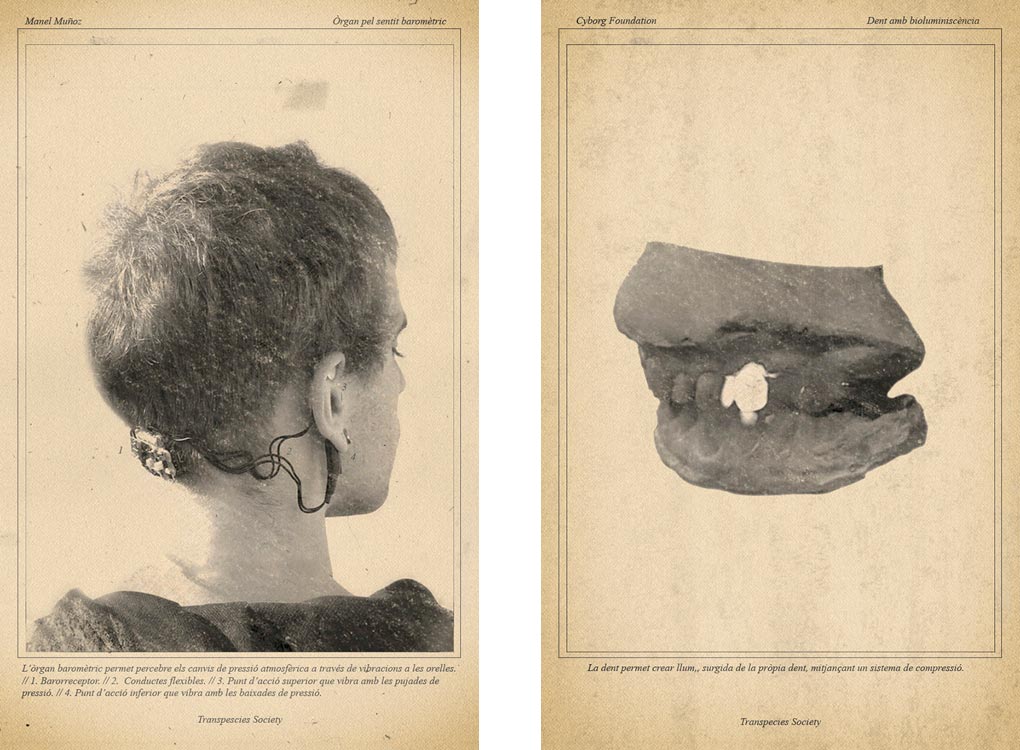 Pablo Ros: Let me take this opportunity to talk about robots. I don’t know if you’re familiar with the Neom project: a mega city in Saudi Arabia, which has a budget of $500 billion to build an enormous futuristic project where technology will play a big role. They expect the population of humanoid robots to be larger than the human population. And this future mega city is being publicized by a robot, which the authorities have granted its own passport and Saudi nationality. Given that you’re the first cyborg to be officially recognized by a State, I’d like to hear your opinion on a robot with artificial intelligence having been granted a nationality. Her name is Sophia, and she has more rights than women do in Saudi Arabia. I have mixed together two different questions here: on the one hand, the robot being granted nationality; and on the other, the rights of robots and cyborgs.
Pablo Ros: Let me take this opportunity to talk about robots. I don’t know if you’re familiar with the Neom project: a mega city in Saudi Arabia, which has a budget of $500 billion to build an enormous futuristic project where technology will play a big role. They expect the population of humanoid robots to be larger than the human population. And this future mega city is being publicized by a robot, which the authorities have granted its own passport and Saudi nationality. Given that you’re the first cyborg to be officially recognized by a State, I’d like to hear your opinion on a robot with artificial intelligence having been granted a nationality. Her name is Sophia, and she has more rights than women do in Saudi Arabia. I have mixed together two different questions here: on the one hand, the robot being granted nationality; and on the other, the rights of robots and cyborgs.
Neil Harbisson: Sophia and I are going to give a talk together this year. It’s great to consider robots a new species that also has rights – not just robots, but all the other species. We should defend the rights of all species, from insects to robots. Humans don’t respect other species. In general, our species hasn’t respected other species. I think it’s curious that a robot would have more rights than a cat, or in this case, in the country in question, more rights than women.
Pablo Ros: You can bring it up when you talk with Sophia.
Neil Harbisson: I'll ask her what she thinks about it. I mean, does she have more rights than other women? Is Sophia a woman?
Pablo Ros: Sophia is a robot.
Areti Markopoulou: They didn’t identify a gender, but they did choose a name.
Pablo Ros: It’s a feminine name and the robot has physical identifiers. It’s a humanoid robot.
Luis Fraguada: But as for her rights? What kind of rights does she have? What kind of things can Sophia do?
Pablo Ros: She can have a passport.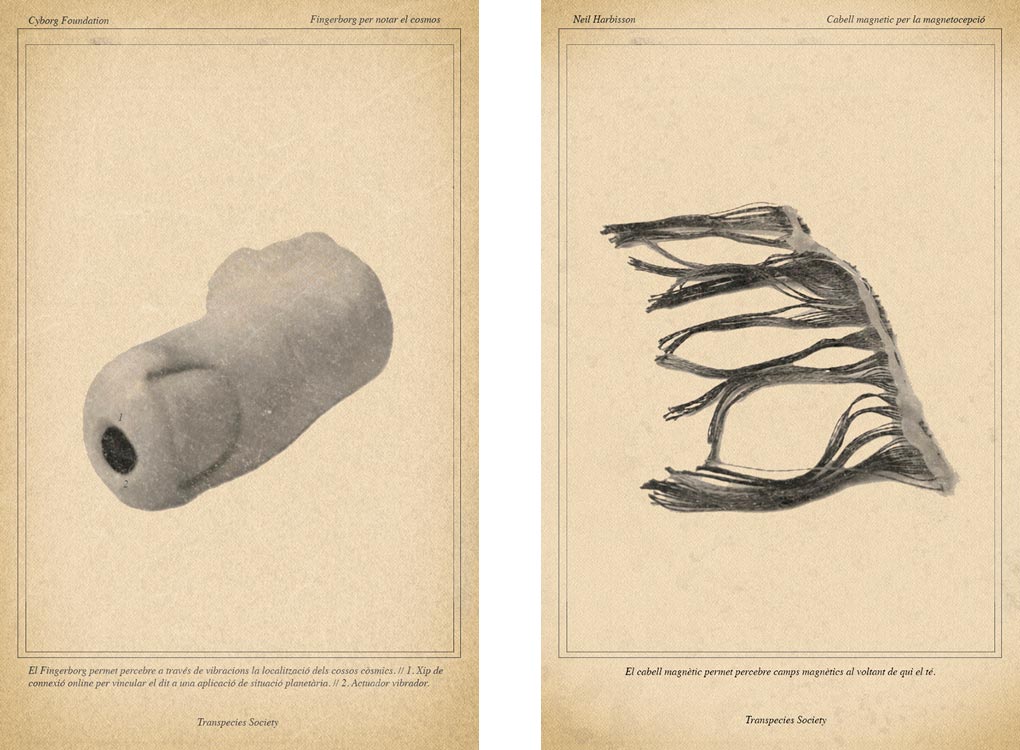 Pablo Ros: Have you felt marginalized because you are cyborgs? Do you consider yourselves to be a transgression of our society? Are you yourselves a criticism of the society we live in or an artistic production?
Pablo Ros: Have you felt marginalized because you are cyborgs? Do you consider yourselves to be a transgression of our society? Are you yourselves a criticism of the society we live in or an artistic production?
Manel Muñoz: As for marginalization, in my case most of what I’ve experienced has been acceptance and interest among my generation. A lot of people have asked me “Why?” We use technology to connect to what we’ve become disconnected from. In my case, I use it to be more attentive to the outside world.
Moon Ribas: I think we should see it as art. I think it’s an artistic project: creating new senses and designing ourselves. That has social consequences. Instead of constantly designing the environment to be more comfortable, we could design ourselves to adapt better to the planet we live on. Our way of life isn’t at all suited to what our planet is like. The planet also moves and changes. We’ve built static cities and we’re consuming so much energy that our planet can’t handle it. Maybe it’s time to adapt ourselves to the planet. What we need to fight for is acceptance for people with new senses and new organs.That will lead to new dangers, like feeling hacked or having to assert that you’re the owner of your organs and not a company. That’s why we’re creating cyborg laws, to ensure protections and freedoms for people to have new organs and new senses.
Neil Harbisson: We are engaging in a critique of society and our species through art. We are against what we have done as a species. For thousands of years we’ve designed the planet and we’ve changed it in order to promote our own survival. Now, we believe that we should start designing ourselves. If we could control our own temperature, we wouldn’t need heating or air conditioning. We wouldn’t need to warm up the planet when it’s cold and cool it down when it’s hot. If we had night vision, cities could be dark. So could the inside of this house. We would be able to see, so we wouldn’t need to change the environment constantly. That is starting to be possible. We can start to design ourselves so that we no longer need to design the environment. That is our criticism of our species, and we express it through art. And we classify it as art because in art there are no rules; there are no limits. That gives us total freedom to express ourselves and to create our projects.
Moon Ribas: That’s also what other species have done. Other species have not changed their environments to survive; they have adapted.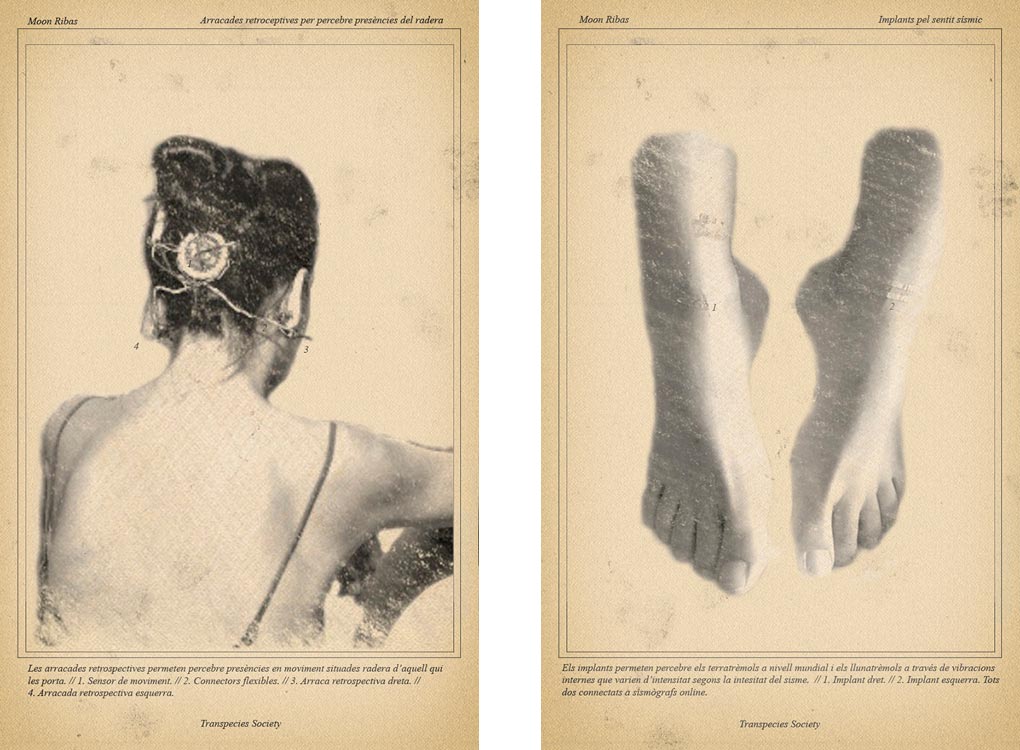 Areti Markopoulou: Moon, I liked your comment saying: “We’ve been building static cities – rigid things on the planet because that’s how we’ve felt comfortable or safe.” Of course, the planet is much more dynamic, and nature is much more dynamic. If, on the one hand, your view is: “Let's start designing our bodies so that we can be a more adaptive species, more responsive to our environment,” what other things do you think could support what you’re doing and where would they come from? From rethinking the materials we use? Or how we generate our energy? Or would they come from thinking about the kind of programs we generate in our cities? Our infrastructures? What would you add to the fundamentals of your project – this union with new senses or the connection with our surroundings – to help it going forward?
Areti Markopoulou: Moon, I liked your comment saying: “We’ve been building static cities – rigid things on the planet because that’s how we’ve felt comfortable or safe.” Of course, the planet is much more dynamic, and nature is much more dynamic. If, on the one hand, your view is: “Let's start designing our bodies so that we can be a more adaptive species, more responsive to our environment,” what other things do you think could support what you’re doing and where would they come from? From rethinking the materials we use? Or how we generate our energy? Or would they come from thinking about the kind of programs we generate in our cities? Our infrastructures? What would you add to the fundamentals of your project – this union with new senses or the connection with our surroundings – to help it going forward?
Moon Ribas: I think that materials, as you just mentioned, are a great topic. Creating new materials that are more adapted to the body – maybe softer, more flexible things.
Areti Markopoulou: To be able travel by transmitting a hologram image of ourselves?
Neil Harbisson: No. Being able to travel by having wings. Why should we need machines to travel? Leaving behind machine travel. There are already species that can travel thousands of kilometers without polluting. That would be the goal, not generating a hologram. I want to travel without polluting. That’s possible. Being able to modify ourselves genetically and adapt, transforming our bodies so that they incorporate a system for flying. I don’t think that’s impossible; we could have wings and fly. Transpecies identity comes from having organs and senses that aren’t human. Angels are transpecies beings: humans with wings. Transpecies identity comes from understanding that humans aren’t something static. We haven’t always been humans; we started out as bacteria in the ocean and then we evolved. We’re at a point of clear transformation, where we’re becoming new species by mixing ourselves with technology. It’s a moment of rebirth for our species. We can decide what organs and senses we want to have as a species. That’s transcendental. Now we’re doing it with technology, but in a few decades we’ll be able to print our DNA – print organs with our DNA. I could have an antenna printed with my own DNA. By modifying ourselves genetically, we’ll be able to introduce new senses that aren’t traditionally part of our species. That’s what we want. We want that transformation to be aimed at connecting with nature and with other species. It creates we call “revealed reality” (not virtual reality or augmented reality): the union between our bodies and technology reveals and lets us discover a reality that already existed and exists but that our bodies couldn’t otherwise perceive.
Luis Fraguada: Do you think that ways of feeling should be something public?
Neil Harbisson: There should be norms or rules or laws that regulate how senses are used, but not what senses you can have. We all have to be free to have the organs and the senses we want, but each government should regulate how those senses can be used. That is already the case for our eyes; we’re free to use them, but there are rules. Maybe I should be free to have the antenna, but at the same time the ways in which I’m allowed to use it should be regulated. Tomorrow I’m going to Dubai because the Prime Minister invited me to talk about cyborg laws. We will always defend the freedom of self-design, but we have to accept that the governments of each country will regulate how these new senses can be used.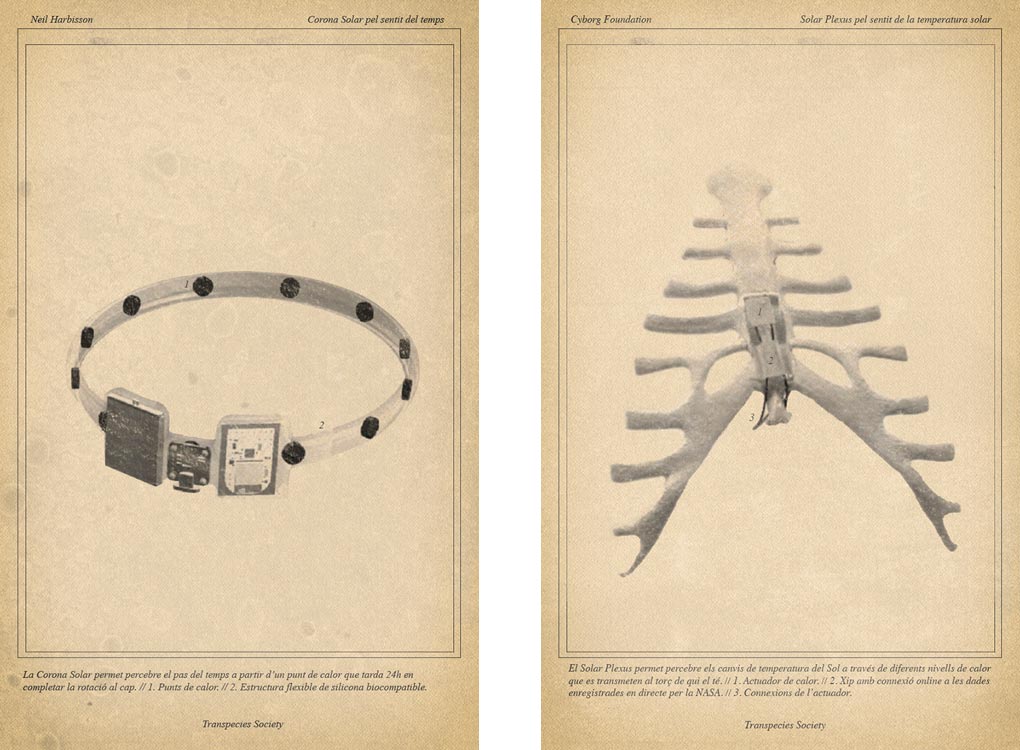 Areti Markopoulou: Do you see any risks: I mean, once all of us have ready access to technology, with the democratization of production, when anyone can print or create their own sensors, their own organs, maybe even in their own homes? Do you see a risk that not everyone will want to improve their sense or add new senses for the right reasons? Some people might have aims that aren’t positive for the planet.
Areti Markopoulou: Do you see any risks: I mean, once all of us have ready access to technology, with the democratization of production, when anyone can print or create their own sensors, their own organs, maybe even in their own homes? Do you see a risk that not everyone will want to improve their sense or add new senses for the right reasons? Some people might have aims that aren’t positive for the planet.
Manel Muñoz: In the end, the issue is creativity and the uses that people make of technology, not the technology in itself.
Neil Harbisson: Ultimately, what people are afraid of is the human brain. We’re afraid of humans. That has nothing to do with technology. We’re afraid of the human brain, not of technology.
Areti Markopoulou: At a time when artificial intelligence is being incorporated into a lot of aspects – like how the machines that replace us work, how the mobility that replaces global infrastructure works – how do you see artificial intelligence affecting our bodies? In your view, are you implementing or working with artificial intelligence?
Neil Harbisson: None of our projects are artificial intelligence. They are artificial senses. We don’t deal with Artificial Intelligence (A.I.), but Artificial Senses (A.S.). The goal is connecting with senses, not with intelligence. If the antenna transmitted the names of colors, it would be A.I. But I didn’t want a machine to tell me what colors are around me. I wanted to experience colors. The antenna lets me receive vibrations from different colors. Then it’s up to my brain whether or not to believe that knowledge or understanding of my surroundings. That’s why it took me three years to identify all the colors. If I had combined myself with artificial intelligence, I would have known right away. The same day I had the antenna installed, I would have recognized the colors around me. But that wasn’t my goal. The goal was for my brain to create the knowledge of my surroundings. That’s why it’s more unique to combine with A.S., because the brain is unique. The combination of a sense and the brain creates knowledge that is unique for each person. For 100 different people, this antenna would create a unique perception for each person. An A.I. would give the same result for everyone. 100 people looking at the color green color would say: “That’s green.” With A.S. that won’t be the case. There will be differences, because everyone’s perception is different. Knowing what earthquakes are is different from feeling them. Knowing what it means to move up or down is different from experiencing it. As we see more interest in Artificial Senses, we’ll be seeing more projects of this kind.
Areti Markopoulou: But there are senses that can be controlled by virtue of the human condition. If I am tired of images I can close my eyes. If I am tired of noise, I can cover my ears.
Neil Harbisson: But you can’t turn them off. Your eyes are still there, under your eyelids. You can block your senses, but you can’t disconnect your eyes. You can’t disconnect your ears.
Areti Markopoulou: How do your implanted organs evolve? Our organs develop with age. They’re influenced by the environment; they construct our psychology. In that regard, it’s more than an artificial intelligence. It’s a deeper, more essential union with the body and its evolution.
Neil Harbisson: All our sensory organs deteriorate as we get older. But if you have a cybernetic organ, the opposite is true. It improves over time. As technology advances, the sensory organ can be enhanced. Your cybernetic senses will be better than when you were young. Therefore, getting older is something positive if you have cybernetic senses, because you know that as you get older you’ll have better perception. Technology advances, and you are technology. There will be a part of you that will be advancing.
Pablo Ros: On a strange day like today when it’s snowing in Barcelona, what are your perceptions of the city using your senses?
Neil Harbisson: Silence. Snow brings silence. White doesn’t make noise, so the city doesn’t make noise.
Moon Ribas: Barcelona is very calm. I perceive the cold, but that’s from my natural senses.
Manel Muñoz: I’d say it’s strange because the air pressure is very high. It’s strange because we’re at around 1020 bars, and the average is 1013 bars. At 1020, most of the time the sky is clear; so that’s strange.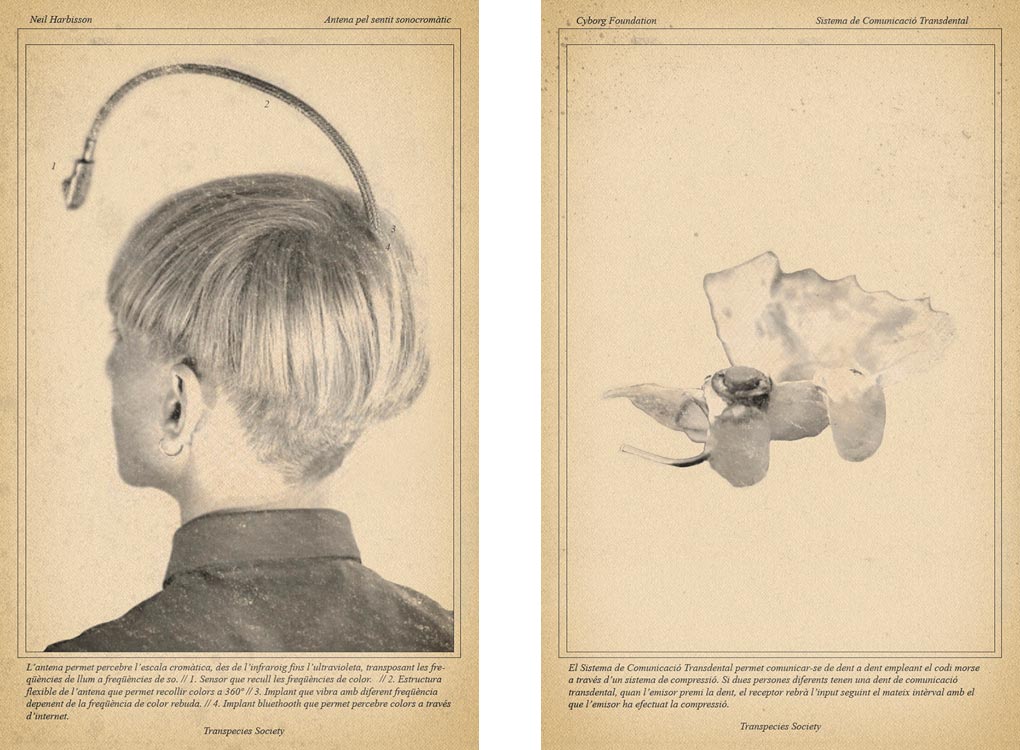
| ISSN : 2575-5374 |